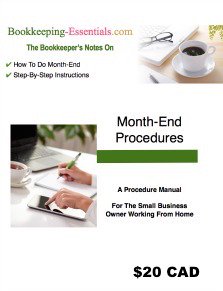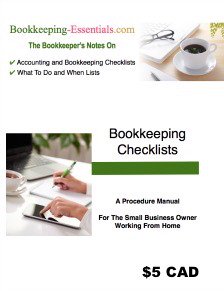
Federal Retirement Pension Plans
Focus on Payroll
by L. Kenway BComm CPB Retired
Parts Are Reprinted From The Bookkeeper's Notes Issue 5 August 2011
What You'll Find In This Chat

Canada and Canada Pension Plan
I came across a March 19, 2010 article on CBC News - Business at cbc.ca. It was titled, Sorry, Canada, the U.S. has the Better Safety Net by Tony Keller.
I found the article interesting ... so I thought I would a take a brief look at the Canada pension plan versus the U.S. social security (pension) plan.
Canada
In Canada, the CPP was overhauled in 1997 because it became evident in the early nineties that the fund would not be able to support today's Baby Boomers. The CPP was designed to be a "pay as you go" fund ... creating an intergenerational transfer of funds.
What do I mean by intergenerational? It means today's workers fund today's retirees. The changing demographics were a factor in putting the CPP in jeopardy.
The CCP is funded by payroll tax contributions shared between the employee and employer equally. Self employed people pay both parts. It does not receive direct government funding.
Bruce Cohen and Brian Fitzgerald in The Pension Puzzle explain that the current system can no longer go broke because "its primary asset is the ability to tax employees and employers".
Since the 1997 overhaul, benefits will be funded by a mix of contributions and investment income (see CPPIB) beginning in 2021. Until then, it continues being funded by contributions ... i.e. "pay as you go".
The Canada Pension Plan Investment Board (CPPIB) was created in 1997 to manage the CPP investment portfolio. It operates like a private sector investment management company with several legislative safeguards to protect it from political interference.
The funding of the program is now reviewed every three years (with the current rate at 4.95%) and the $3,500 not subject to contribution was capped where previously it had been indexed. This cap diminishes its value over time.
The death benefit was also frozen at $2500 instead of being tied to inflation.
In addition, changes were made to tighten up the disability program that had become "a significant expense".
All these changes have resulted in Canada's CPP being "a well-funded, actuarially sound pension scheme", says Tony Keller.
Keller feels the real flaw in Canada's CPP system is that it "meets only a small fraction of that [a retiree's income] requirement. If you retire at age 65, the maximum you can receive (excluding OAS which can be clawed back) is $11,520 a year in 2011. ($12,150 in 2013)
Not everyone receives this maximum as it is a contributory plan. This means most Canadians will need to supplement this pension with private retirement funds. See The Bookkeeper News for the proposed PRPPs.
The earliest you can retire is age 60 with normal retirement at age 65. More changes to the CPP came into effect in 2011 ... and are being phased in over the next five years. The changes encourage workers to stay employed/delay retirement until age 70 and discourage workers from retiring at age 60. Click here to read about these changes.
Click here to find out current CPP payroll tax rates.
Service Canada has a retirement calculator to help you estimate your retirement income. You can find it at www.servicecanada.gc.ca> Life Events> Retirement Planning> Estimate your retirement income.
United States
Tony Keller says in his article that the American safety net is wider than the Canadian one.
The federal retirement (old age) plan is funded through payroll taxes called FICA (Federal Insurance Contributions Act).
An article in Wikipedia suggests the Federal Old-Age and Survivors Insurance Trust Fund will be exhausted by 2036 if no legislative action is taken. At that time, benefits are expected to be reduced to 75% of current levels.
The plan has gone through a number of changes since its inception in 1935. But it appears that the U.S. may have to go through some additional pension reform as Canada did in the nineties.
Wikipedia explains that "current year expenses are paid from current Social Security tax revenues.". Any excess is invested in Treasury Notes and "indirectly finances the federal government's general purpose deficit spending" ... i.e. Congress borrows the surpluses that are meant to "cover the added retirement costs of the "baby boomers"."
The earliest you can retire is 62. Full retirement is between the ages of 65 to 67 ... it depends on the year you were born. You can delay retirement to age 70.
The current U.S. payroll deduction is higher than Canada's 4.95% for employees and employers at 4.2% for employees under the 2010 Tax Relief Act (6.2% for 2013 and 2014) and 6.2% for employers.
The U.S. also has higher maximum insurable income than Canada in 2011 at $106,800 and $48,300 respectively ($113,700 and $51,100 in 2013). This means Americans get higher benefits when they retire than Canadians do ... about $28,000 to our $11,000 (numbers rounded) in 2011 ($30,000 to our $12,000 in 2013).
Click here to find current FICA payroll tax rates.
Click here to read about FICA payroll tax deposits.
The Social Security Administration website has a retirement calculator to help you estimate your benefits. You can find it at www.ssa.gov/estimator.

LET'S CHAT ABOUT ...
How the CPP System Works
CPP (Canada Pension Plan) is one of the tax compliance items that must be deducted from an employee's pay cheque.
CPP is in effect across all provinces and territories however Quebec has its own program QPP. Everyone between the ages of 18 and 70 who are employed must contribute to the plan with 50% of the contributions paid by the employer. It is a mandatory employment deduction. Self-employed business owners pay both the employer and employee portion.
So do you ever wonder how you will receive your CPP benefits?
While CPP is a contributory plan based on your employment earnings, the CPP system is not a self funding plan.
It used to be that your contributions did not go towards funding your own pension ... they went to funding today's pensioners. That meant today's workers funded today's retirees.
However, the CPP system is now funded on a steady state basis. Current contribution rates are designed to create a constant fund over 75 years ... which means the Canada Pension Plan is actuarially sound for the next 75 years
Read more: http://www.cbc.ca/money/story/2010/03/24/flaherty-pensions.html#ixzz11mZtbjXP
There are three types of CPP benefits - disability, survivor, and retirement. I'm going to chat about the retirement benefits.
The pension is designed to replace about 25% of your average earnings over the years. It does not start automatically. You must apply to receive to begin receiving your retirement benefits.
I was reading Advice Hotline, a free e-publication by MPL Communications Inc. They had a short write-up this month (July 2009) on how our current CPP system works ...
... I thought I'd share the simplified overview with you because I find I do better work when I understand the background to a subject ... especially tax compliance items.
To receive a full pension from the CPP you have to have paid into it for 40 years. The earliest you can begin contributing is age 18. This means it is possible that you would be eligible for a full pension at age 58.
If you retire before you reach the full 40 years, your pension is prorated based on the number of years you paid in ... so if you contributed for 37 years, your pension would be prorated to 37/40 = 92.5% of the full benefits.
There is a catch though ... isn't there always. To be eligible for a pension, you have to have contributed for a minimum of 20 years. (The Pension Puzzle - see below - says that you qualify for a pension if you've made just one contribution ... but your pension would be very small.)
The CPP system is setup to assume you retire at the age of 65. If you elect to retire earlier (between 60 and 64), your pension is reduced 1/2 of 1% per month. So if you chose to retire at age 60, your pension benefits would be reduced by 30% permanently.
The reverse is also true. If you wait until 70 to receive your pension benefits, your benefits would be increased by 30% for the remainder of your life.
You can read about the recent changes to CPP here.
If you are interested in reading more about how pensions work in Canada, Bruce Cohen and Brian Fitzgerald's book entitled "The Pension Puzzle, Your Complete Guide to Government Benefits, RRSPs and Employer Plans" is an excellent read. It was last published in 2007 so although some of the information has changed, it is still a valuable guide.
If nothing else, the book explains and assures you that the changes made to the CPP system in 1998 ensures you will have CPP benefits when you retire ... this perhaps takes away a bit of the sting of meeting the tax filing deadlines a small business owner faces.
You get information about your CPP benefits from HRSDC. Two links that might be of interest ... You can estimate your CPP retirement benefits with the HRSDC Retirement Income Calculator ... and you can request a copy of your CPP Statement of Contributions.
You do not have to have a My Service Canada account to access the above information. If you have a My Service Canada account, you can view your CPP benefit information directly online.
I hope this bit of background on CPP makes it easier for you to understand and meet your payroll tax filing deadlines.

See you on the next page ...
Your tutor Lake
Enjoy A Tea Break With
Me Today. Let's Chat!
Use the search feature to quickly find the
information you're looking for.
Join Me On Facebook
Help support this site by "liking" me! Here's where I post current information.
Listed Under Websites NOT Local Business.
This website is NOT associated with the business operating in Bonnyville AB.



